How to train a kitten to use the litter box?
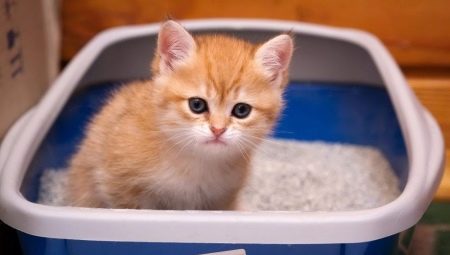
Some people would like to take home a fluffy (or not so fluffy) pet, but the thought of needing to train it to the litter box forces them to postpone the dream until better times. The point is the lack of information, or to be more precise, the correct information about training a cat to the litter box. This process is not the most difficult, although it involves a number of components that need to be taken into account.

Where to begin?
Cats are naturally very clean. But a little kitten is just a child, and he gets lost in such simple things. If he lives with his mother, she will teach him to take care of himself, but the cat separated from his mother is helpless in this sense.
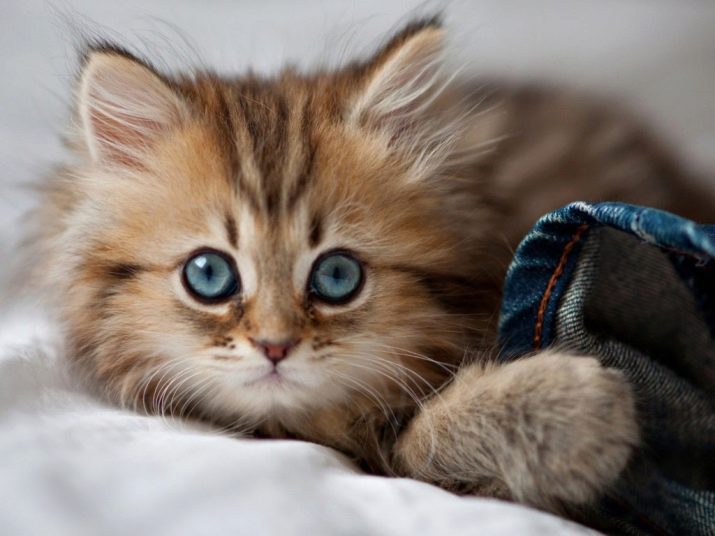
Age is very important: not every kitten can be quickly trained to use the litter box. It is believed that if the animal is already one month old, the learning process will be fleeting. But experts argue with this statement. At this age, the cat is not yet so familiar with the structure of the world around him, he may not be ready to obey someone who demonstrates strength (in a good sense of the word). With a two-month-old kitten, the situation is easier: a new place and people do not scare him. With a three-month-old cat, training is usually quick.
It doesn't matter who you have, a kitty or a cat - the right age and the correct algorithm will teach your pet to the toilet.
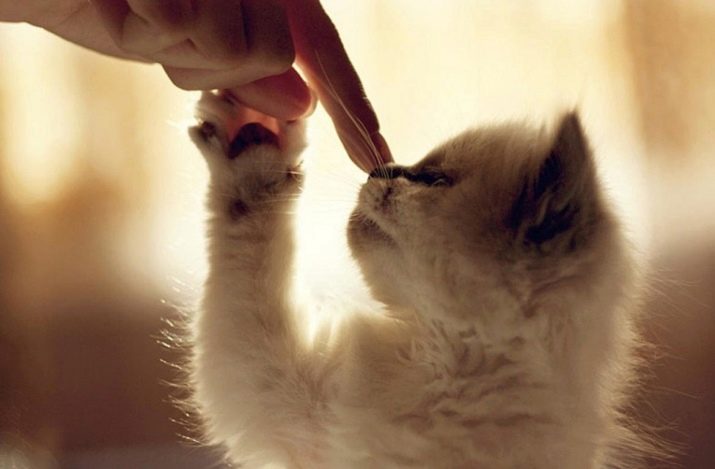
Training involves three steps:
- tray selection;
- choice of filler;
- choosing a permanent place for cat litter.
And only when all this is done, you can introduce the little cat to the toilet. You cannot act from a position of cruelty. Some owners do just that: they think that excessive severity will immediately put everything in its place, and the cat will unconditionally obey.Give yourself and your pet three days, and until this "trial period" has passed, do not try to scold him and make premature conclusions.
It takes skill for him to learn to walk to a place reserved for delicate needs. It will not form in one go.
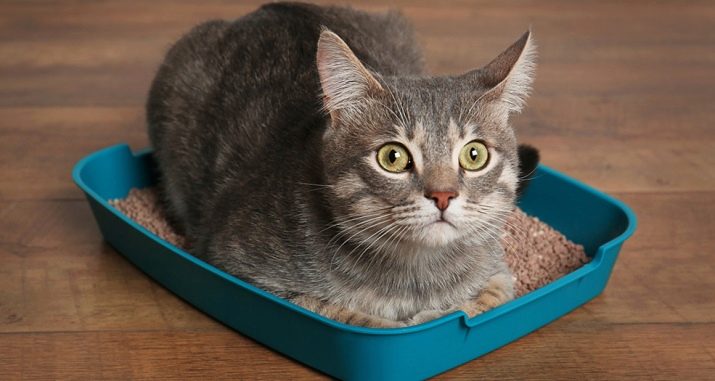
Choosing a tray
The first mistake a breeder makes is a small tray. For some reason, it seems to many that since the kitten is still quite a baby, then the tray for it should be miniature. But your little one can grow up very quickly, and when it comes time to change the litter box, he can show character. So do not doom him to stress in advance: chose a normal-sized tray, assigned it a strict place in the apartment, and try not to change anything.
There are certain nuances in choosing a tray.
- Trays are available with or without grates. The grill covers the filler, the kitten stands on it, so that its paws will not get wet. It would seem ideal, but it's not quite so: instinct will make the cat cling to the bars with its claws. It happens that this leads to injury to the baby. Therefore, experienced breeders do not always use a net - it is easier for them to buy a high-quality filler that dries quickly.
- What the shape of the container will be, it doesn't matter... You can accustom your baby to a triangular tray, a square, and an oval one. Make sure the litter box has a protective rim to prevent the sand from spilling out when the kitten starts cleaning up after itself.
- It is advisable that the purchase of the tray is not sudden. Even before the furry family member crossed the threshold of your house, the tray should already be in the "honorable" place. If today he sees a toilet, tomorrow the filler appears there, and the day after tomorrow the owner finally explains that it’s what it’s for - the business will not end well.

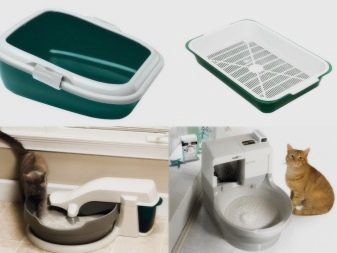
Don't choose trays that have a scent. This happens with low-quality plastic. The stronger the plastic, the better. Extreme colors are also useless, it only seems that the bright color will attract the baby. The visual system of a cat is different from that of a human, so your efforts may go unappreciated.
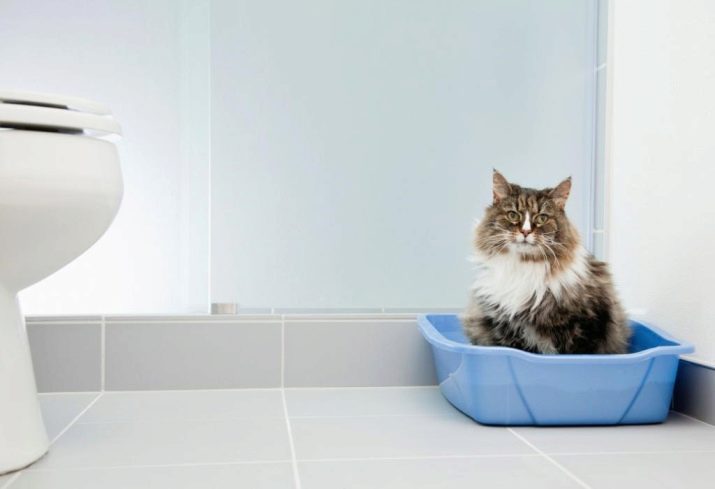
What should be the filler?
The requirements for the litter of the kitten's tray are as follows: environmentally friendly, does not stain the baby's paws, without a pungent smell, able to moderately restrain the smell.
Let's evaluate the most popular fillers.
- Silica gel. It blocks the smell well, the cat's paws remain clean, and has no smell. But! If this composition enters the kitten's digestive tract, it is dangerous to his health.
- Woody. It copes well with masking the smell, does not stain the paws, and is not dangerous for accidental ingestion into the esophagus. Has a faint smell of needles, most cats either do not care or even like it. But some cats flatly refuse to go to such a toilet.
- Mineral. The odor masking is almost zero. The paws get dirty, it is not dangerous for the health of the cat, it has no smell.
- Clay. It restrains the smell of urine, the paws get dirty, it is not dangerous for the digestive system, the smell of the pet does not irritate.
- Corn. Almost copes with masking unpleasant odors. But small particles of litter can stick to the kitten's paws and spread around the toilet. If accidentally ingested into the stomach, it is not dangerous.
- Waste paper... Poorly retains odor, does not stain paws, is harmless to the digestive tract of an animal, and has no odor.


If you are taking a kitten from a home where he has already used the toilet, the litter should be the same type. Subsequently, it can be changed, but for a new habit, this does not need to be done. Wood and corn litter is more often chosen, it is believed that they are more suitable for kittens. Be sure to monitor the kitten's condition: an allergic reaction is not excluded.
Sometimes the cat refuses to go to the toilet because there is too little litter. This way of covering his tracks seems unconvincing to him, and he continues to look for a better place.
If there is a significant flavor in the composition, this can also disorient the cat.
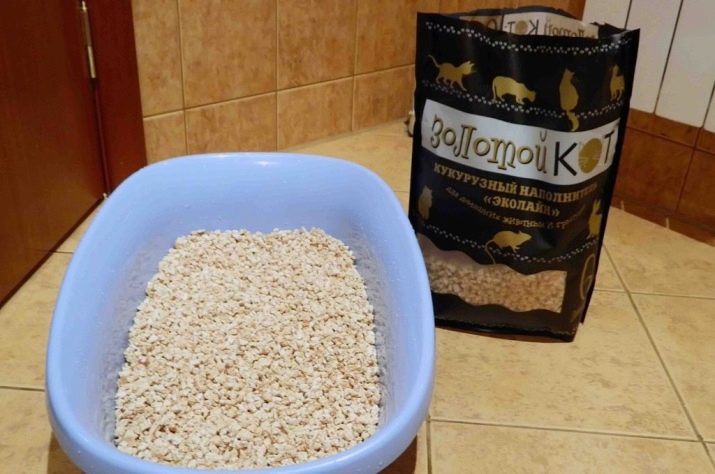
Finally, do not buy a very expensive filler: spending is not one-time, but systemic, it will not be very easy to change later. The product should be affordable, if its purchase involves searching all over the city, give up unnecessary complications.
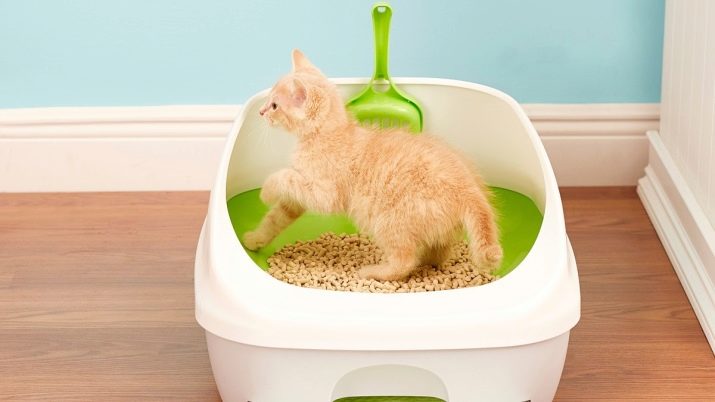
Methods of teaching
So, the tray is purchased, the filler is selected, it remains only to quickly and correctly train the pet to the toilet. Choose where the tray will be. A passage or corridor is not suitable for this purpose, because the intimate area should really be quiet and secluded. The best option is a bathroom and toilet. They are always open, the cat can go there, without embarrassing anyone and without embarrassment, to do his own thing.
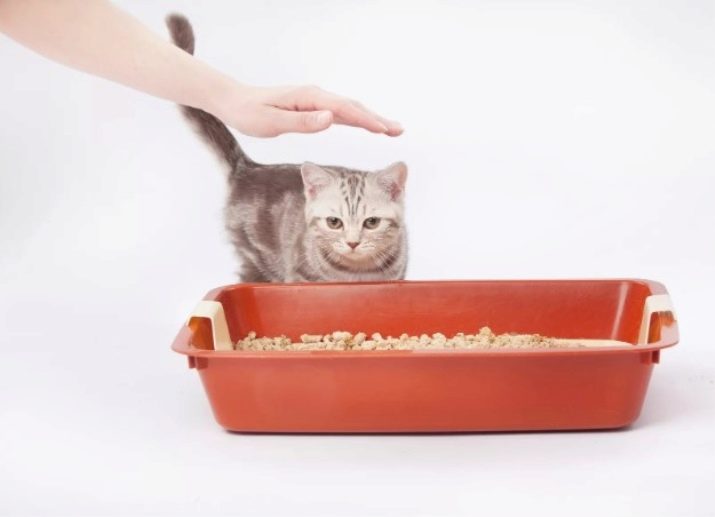
Step by step training looks like this.
- The best time for the first hike is 20-40 minutes after eating. Take the baby to the toilet, place them with their paws directly in the tray. At the same time, stroke the cat, "purr" politely with him, he should not have a sense of danger.
- As soon as you talked to the kitten, leave it in the tray, move away. There is no need to "stand above the soul." The animal must look around and sniff a new place for it.
- If the cat is ready, he will do his thing. As soon as you see success, calmly (no need to shout happily and jump to the ceiling), stroke the baby, praise him. Waste must be dug in with fresh filler.
- Don't rush to remove waste immediately. The cat must hear the smell in order to come to this place again to relieve himself. But the tray is not left intact either, the place is buried.
- If the cat doesn't pee in any way, don't be angry. Give it a walk, try taking it to the toilet again. If the kid did his business in the wrong place, without anger and aggression, easily tap his nose with your finger, tell me what exactly he did wrong. With this gesture, the cat mother lets the kittens know that they are wrong. After you scolded the baby with a light knock on the nose, take him to the tray - you need to fix the logical chain.

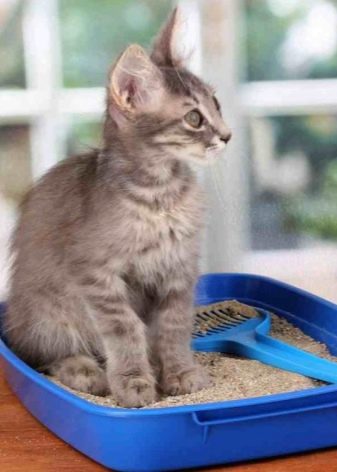
And, of course, there is no need to scold the kitten for an oversight if it is already irrelevant. This happens: the cat has long gone "by", and the owners scold him for the fact that he does not remember. Screaming and physical violence are unacceptable.
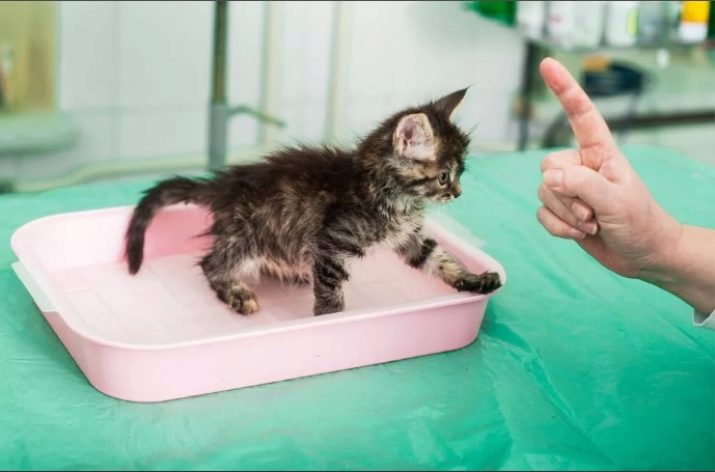
Possible difficulties
If you can't train it for a long time, you will have to carry the naughty baby in the tray more often. We saw a bunch in the wrong place, take the trouble to transfer it to the tray, so much so that the capricious one saw. If there is a puddle in the wrong place, blot it with a napkin, and then put the napkin in the tray for a while. The place where the cat made a mistake must be disinfected - this will help the problem not to recur.
The greatest difficulties arise when the owners are trying to train the street cat to the toilet. They, as they say, from an early age have a different idea of life, the environment, the way of getting food and comfort. And their toilet is, of course, not connected with the tray in any way. How can one help such a savage? There is only one answer - you need to try different options, change something.
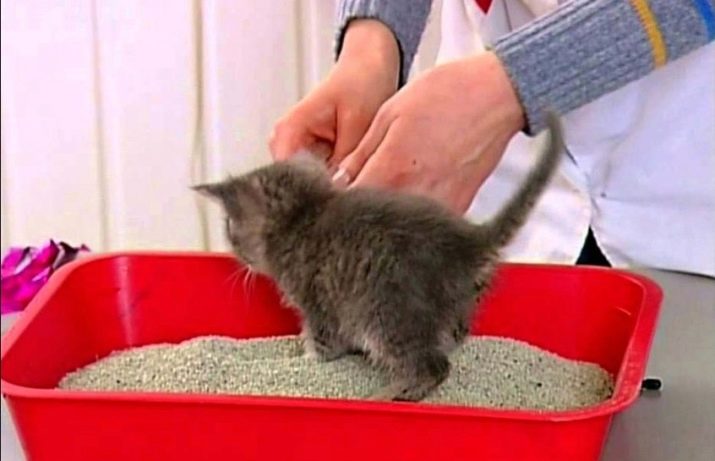
Let's see what recommendations experts give on this score.
- Move the tray to another room. Maybe the baby is scared in the bathroom for some reason, and he does not want to trust such an intimate process in this room. For example, there is a strong smell of detergents, which can easily scare a pet away.
- Remove unnecessary sources of aroma. If the room where the litter box is located even subtly smells of citrus, the cat may go on strike. Cats cannot stand these odors, so you shouldn't tease them.
- Take a closer look at the place he prefers to the tray. If there are small children in the house, and they also sometimes pee in the wrong places, the characteristic smell will also attract the kitten. There is only one way out - to thoroughly rinse and clean the places of children's missteps. And do this even before the animal appears in the house.
- Change the tray. It happens that he is extremely uncomfortable for the cat. For example, the sides of the tray are high, it is difficult for a baby to climb over them, and he seems to go to the toilet, but sometimes by.As the reviews of most cat owners show, pets prefer trays with low sides, even already in adulthood. This is understandable - many cats are quite lazy, and sometimes they prefer not to make unnecessary movements once again in the form of climbing over the sides back and forth.
- Change filler. It also happens: the kitten comes to the tray, but does his business not in it, but side by side. Probably, the pet understood where to go, the tray itself suits him, but for some reason the filler is embarrassing. We'll have to change.
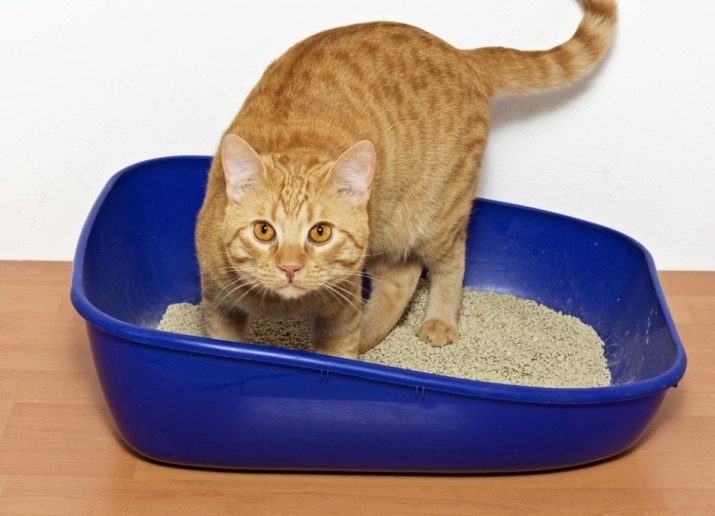
Did you fail to teach in three days? Don't panic. If the cat is street, and when he appears at your house, he experienced stress, the baby may need much more time. But you took it in order to love and rejoice, which means you have to breathe and start over. But how proud you will be when the furry finally gets used to the toilet!
What absolutely cannot be done is to poke the animal with its muzzle into the tray, beat it and leave it without food. It’s not even worth explaining why such methods are unacceptable.
Useful Tips
Any teaching is a system. And teaching a cat to walk in a litter box is also nothing more than a system. In addition, science does not stand still, and various devices that help cats not to overshadow their owners with their disobedience are on active sale today.
For example, the following tools may help you.
- Aerosols that discourage cats from shitting in the wrong places. They need to treat the place where, despite your discontent, the cat often goes to the toilet.
- Acetic acid, ammonia. This is a worthy replacement for aerosols, but they do not discourage the cat from shitting in this place, but only neutralize the smell.
- Small stones for the ground in flower pots. Many cats love to go to the toilet in flower pots instead of a litter box. It is necessary to protect the soil from such "fertilizers", and this can be done with the help of decorative stones.
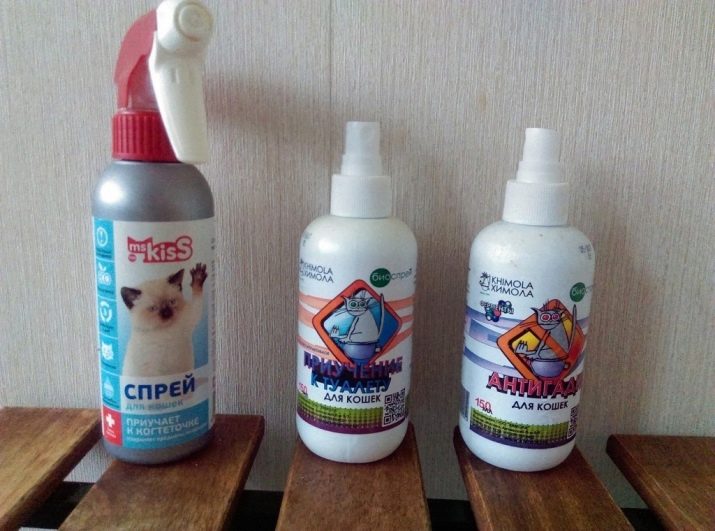
The main thing that you must remember is that any cat is trainable. At a certain stage, it will seem to you that it was you who did not get the kitten, but the punishment, that he is stupid and good for nothing. But then you will most likely realize your mistakes. Another baby has to be trained for 1 month, but the result is fixed well and firmly. There are smart cats (as a rule, those that are older), they quickly grasp everything, and after a couple of days they run to the toilet in a clearly marked place.
If the cat is still very small, you can make her indulgences. Kittens do not always walk around the house, they prefer to be in the same room. Place the tray there. And then, when the pet grows up, move the tray to the right place. You will also need your observations of the kitten: see how he spends time after eating. During games and fun, the baby may stop and become alert. As soon as the crumb has done this, transfer it to the tray.
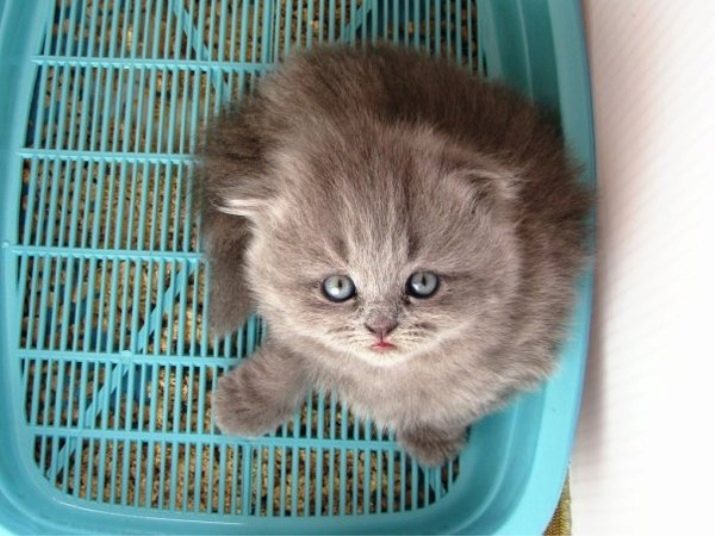
A three-month-old cat usually grasps everything much faster. He has already got used to it, he has already understood who is the boss here, the cat is ready to "cooperate". Try not to miss this time, because as it grows up, it is difficult for the animal to acquire new habits. If you are going somewhere (for the summer cottage, for example) take the tray with you.
Not everyone takes it, believing that the cat does not need it, because there is a street nearby, left - here's a toilet for you. But don't be so careless about your established habits.
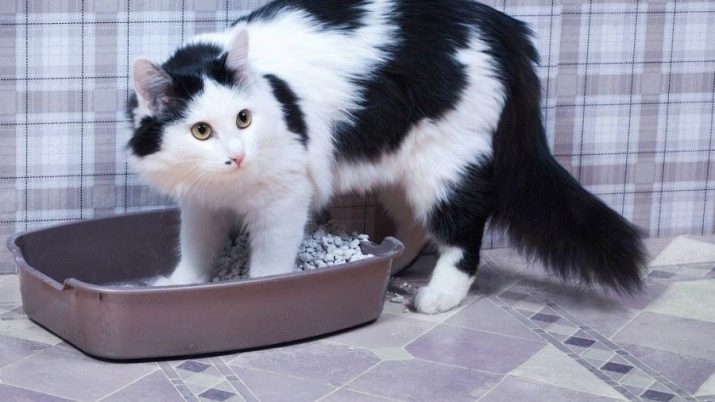
No matter how long the training takes, it's worth it, the result is of great importance. Do not chase records, do not listen to friends who boast about their smart and intelligent cats - perhaps their success is a little exaggerated.
For detailed tips on litter training, see the following video.
































